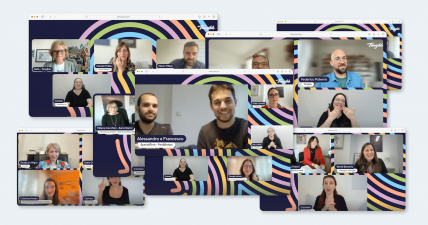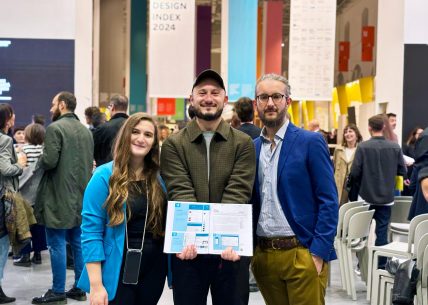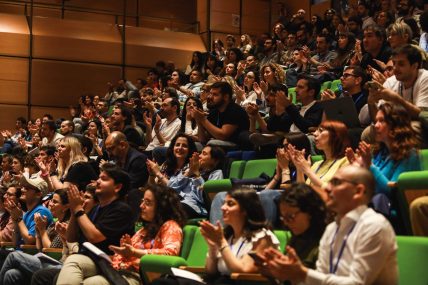Thinking
uxday 2024: some Insights on motivation, research, design systems and more
For the third consecutive year, we attended uxday and tried to capture some lessons learned from the day's talks.
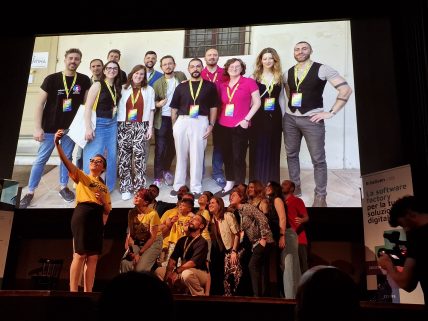
In its third year, uxday continues to grow and evolve, with the 2024 edition bringing significant innovation through the introduction of lightning talks, enriching the day's usual program. Last year, we had the pleasure of closing the day with Ilaria's keynote, titled "The Great Disenchantment." This year, we immersed ourselves as the audience, gathering many stimulating insights. As is tradition, we share a collection of reflections on what we experienced and heard during the event.
The talks ranged from the theme of motivation as designers and the approach to design, to research, accessibility, design systems, and sustainability, ending with a series of reflections on the interfaces of the future... or a very near present, depending on the point of view.
Motivation and approach to design
Maria Cristina Lavazza opened the event with a light motivational push. In the whirlwind of everyday life, we sometimes lose the ability to stop and reflect on what we do, what value permeates what we do, especially who we are. This first talk set the stage for a series of talks showing and demonstrating how we are always searching for our "element" and value, quoting Lavazza.
Giulio Michelon then took Lavazza's reflections further, talking about value from another perspective. Value as a matter of reflection throughout the design process, how to convey it to the client, and how to guide them along a path that reaches a destination with the right timing, with clear and shared objectives.
While Giulio Michelon focused on the client relationship, Matteo Montolli shifted the focus to our relationship with ourselves as clients. Matteo shared his experience of designing a tool for his own company, showing how designing for oneself changes many paradigms, shapes relationships within the team (preferably multidisciplinary), and confronts us with budget constraints, limited time, and challenges to solve independently. "Doing as little as possible in the best way" to test its value is a good strategy.
Enterprise UX and user research
Maria Teresa Stella spoke about the challenges of redesigning interfaces in the B2B world. These tools are often outdated, complex, and lagging in the experience they offer, despite being used by many people for years. But how to help these users, resistant to change and fearful of the possible consequences of a new interface?
Deep knowledge of the context is fundamental, and in this sense, all design thinking tools (blueprints, co-design, archetypes) are extremely useful, along with constant sharing and alignment of objectives with stakeholders. As Maria Teresa Stella rightly says, and as we all know, for things to work, they must be tested, tried, and used.
Building on this important principle, Elisa Invernizzi and Andrea Pontiggia shared a case study, highlighting the role of user research activities aimed at changing the way a brand's offer is communicated, in this case, BTcino. How to tell the story of the "smart home"? They used various tools such as focus groups, surveys introduced at strategic points on the site, empathy maps, and personas, which allowed them to understand customers' fears, needs, and requirements. Thus, brand communication is defined as human-centered.
Design systems, accessibility and sustainability
The morning concluded with Federico Bortot's lightning talk on building an accessible and scalable palette for design systems. After lunch, the focus remained on design systems. Letizia Sechi shared the masterful work of systematizing co-designed and implemented information in the design system used by the Zanichelli team. The focus of the intervention was language. How to maintain consistent copy? How to avoid unnecessary rework? What style is most appropriate to use? These are some of the questions her team addressed to reduce design errors and optimize resources.
Including language in the design system helps make designers autonomous in making content decisions.
Letizia's talk on team resource efficiency was followed by Nicola Bonotto highlighting the concept of environmental and social sustainability and the principles to follow for daily work, based on the new web sustainability guidelines promoted by the W3C Consortium. With the ICT sector's 4% impact on the environment, our goal is not only to design usable and aesthetically pleasing tools and services but also "attentive" and durable ones. How to communicate this to the client? By praising the benefits. A well-optimized green site, for example, is more efficient and has a lower server impact.
Innovation and the future of design
The final part of the afternoon saw Riccardo Fresco using design thinking to review the structure of a digital volunteering community: Skillando. This community supports third-sector organizations with the goal of reducing the digital divide in Italy and worldwide. This approach increased the community, made it more active, and boosted the missions to work on.
Beatrice Vivaldi and Michel Catalisano used the metaphor of the dinosaur to discuss the challenges of designing legacy software used by many people accustomed to a certain work setup. How to redesign them without overhauling them? They explained the evolution of user experience concepts in 90s and 2000s software, helping us understand how to bring them up to date while maintaining a user experience coherent with the mental models of their users, long-time fans of these tools.
The day closed with a showcase of futuristic, but not too distant, interfaces, created by Daniele Del Gaudio and Federica Vittorielli. Are we sure the interfaces we see in movies (Marvel in particular) are so far from our current reality? It was fascinating to see how the world of sci-fi cinema is approaching innovations, or rather, how today's innovations are rapidly approaching what we have always seen in superhero movies.
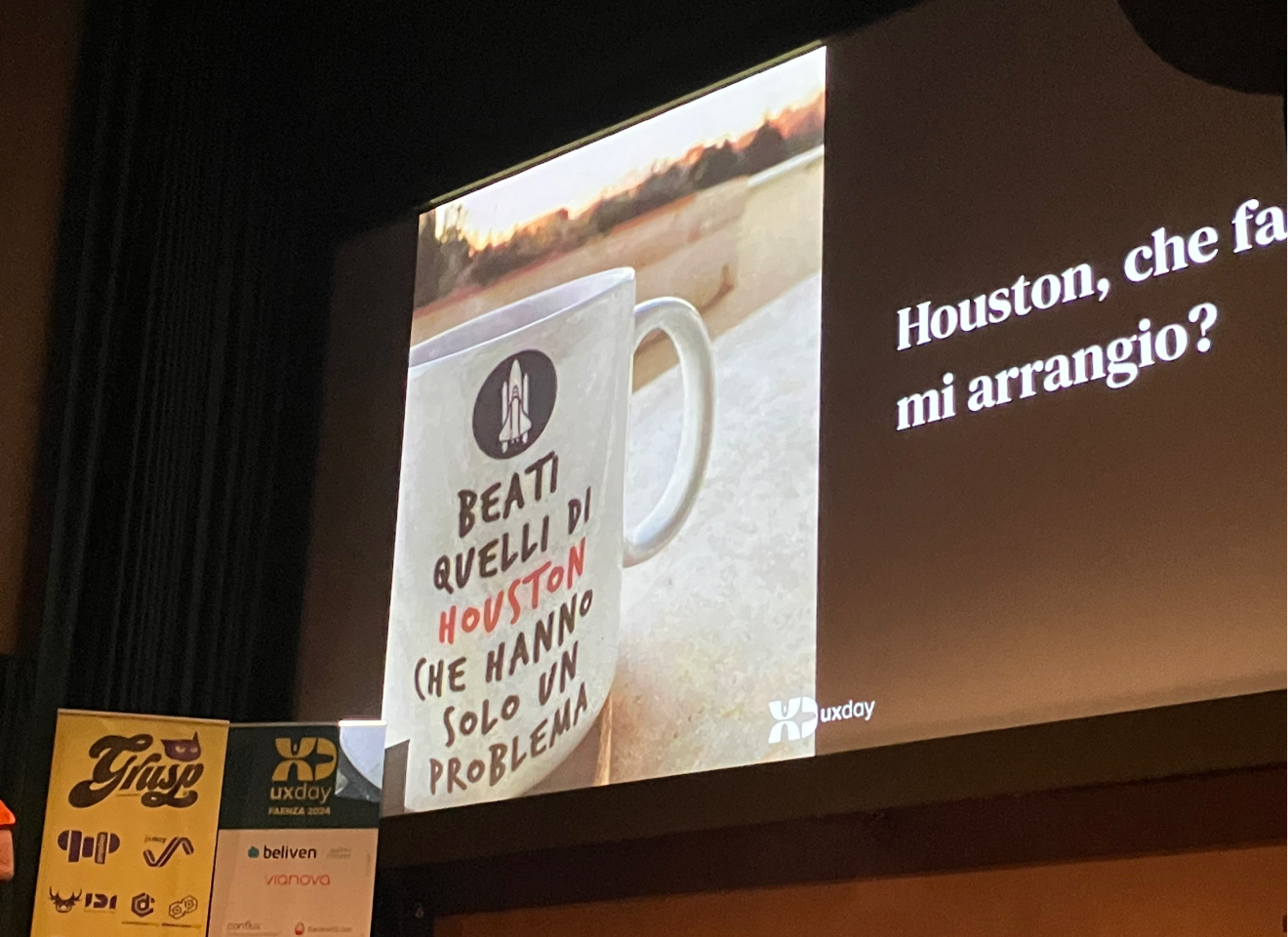
The introduction of lightning talks further enriched the experience, allowing for a broader range of topics to be covered dynamically and quickly. It would have been interesting to delve deeper into the topic of artificial intelligence in design. Nonetheless, uxday 2024 reaffirms itself as an interesting event, rich in insights and reflections on the challenges and opportunities in the field of user experience design.
We are very curious to see how this event will evolve in the next 2025 edition.
